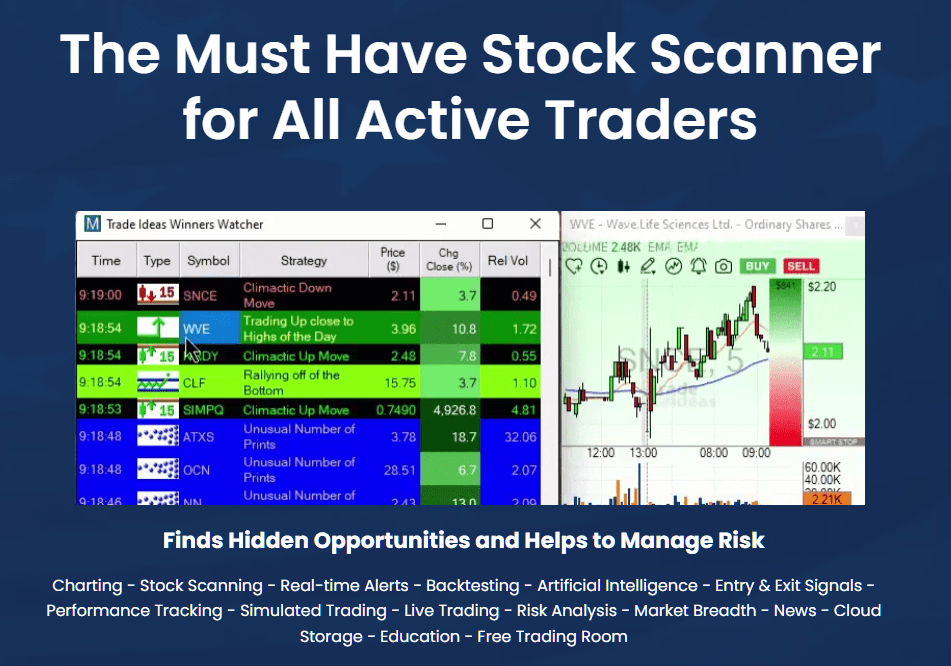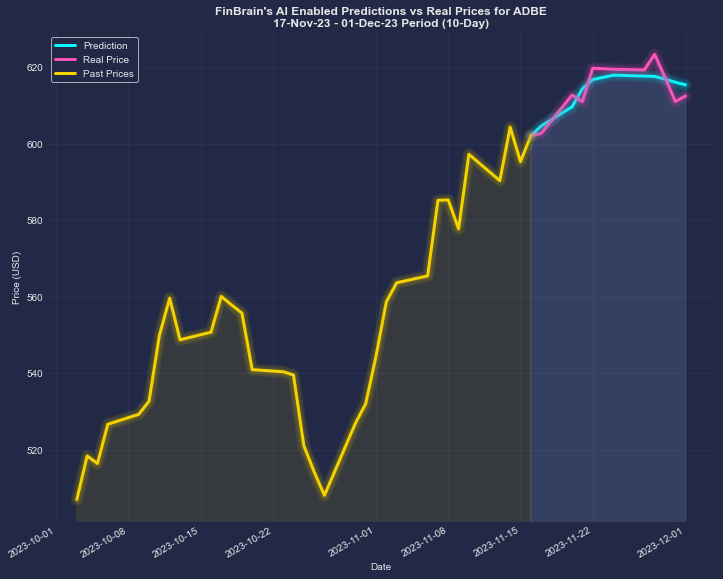20 Free Tips For Picking Ai Investment Advisor Websites
20 Free Tips For Picking Ai Investment Advisor Websites
Blog Article
Top 10 Tips For Assessing The Accuracy And Performance Of Ai Stock Trading Platforms
In order to be sure that the platform you choose is able to provide reliable information and forecasts, it's crucial to evaluate the accuracy and efficiency of the tool. Here are the best 10 ways to evaluate these platforms.
1. Backtesting Results
What to look for: Determine whether the platform provides backtesting in order to see how its predictions have performed based on historical data.
Why it is Important: By Comparing the AI model's predictions to actual historical outcomes, backtesting validates its accuracy.
Find platforms that provide the capability of setting up backtesting parameters.
2. Real-Time Performance Tracking
What to look for Check the performance of the platform under real-time market conditions.
Why It's Important: Real-time performances are more reliable indicators of the effectiveness of a platform rather than the backtesting of the past.
Try a trial for free or demo account to observe and compare the accuracy of real-time forecasts to actual market activity.
3. Prediction Error Metrics
What to look for: To quantify the accuracy of your predictions, look at the accuracy of your predictions using metrics such as mean absolute error (MAE) and root mean squared error (RMSE) and R-squared.
Why it is Important : These measures provide a quantitative way to determine how close predictions are to actual results.
Tips: Platforms that openly reveal their data tend to be more transparent and reliable.
4. Ratio of Success and Win Rate
What to Look for: Examine the rate of winning on the platform which is the percentage of predictions that are correct. Also, look at its success ratio (the profitability of trades made based on predicted outcomes).
Why It Matters The high rate of win and success ratio indicate better forecasting accuracy and potential profits.
No system is perfect. Be wary of platforms which promise unrealistic win rates, e.g. 90% %+),.
5. Benchmarking Market Indices Against Benchmarks
What to look for: Compare predictions and performance of the platform against major market indices.
Why it is Important It can be used to determine if a platform over or underperforming the overall market.
TIP: Don't only look for short-term gains, but also a consistent performance over a long time.
6. Consistency of Market Conditions
What to look out for: Determine how the platform performs in various market conditions (bull or bear markets, high volatility).
Why is it Important A solid system will be successful not only in favorable market conditions but as well in any other circumstance.
Try the platform's forecasts in volatile times and during market declines.
7. Transparency in Methodology
What to look for: Understand AI models and algorithms (e.g. reinforcement learning and neural networks).
Why it Matters: Transparency helps you evaluate the validity and reliability of scientific research.
Avoid websites that employ "black-box" models that don't explain how predictions are made.
8. Tests by independent experts and User Reviews
What to Look For When selecting a platform Check out the feedback of users, and look for independent tests or third-party assessments.
What is important Why it matters: Independent reviews and tests offer objective insight into the accuracy of the platform and performance.
Check out forums like Reddit or copyright to see what other users have posted about.
9. Risk-Adjusted Returns
What to look out for The platform's performance can be evaluated with risk adjusted metrics like Sharpe Ratios or Sortino Rateios.
What is important The metrics are used to measure the level of risk taken to earn returns, giving more complete information about performance.
Sharpe Ratio is an excellent indicator of risk-adjusted returns.
10. Long-Term Track Records
What to Look For What to Look For: Check the platform's performance for a long time (e.g. over three or five years).
What is important Why it is Important: Long-term results are more reliable than the results of the short term.
Tips: Avoid platforms that show only the short-term or only selective performance.
Bonus Tip: Test your account with an online version
You can test the platform using no cost demo accounts to determine how reliable it can be in real time. This will allow you to evaluate accuracy and performance.
If you follow these guidelines, you can test the accuracy and efficiency of AI platforms for stock analysis and prediction. Select one that's compatible with your needs for trading and your risk tolerance. Keep in mind that none of the trading platforms is perfect The best approach is to mix AI insights with personal analysis. View the best moved here about ai trade for website recommendations including trading ai, incite, investing ai, trading ai bot, ai chart analysis, ai hedge fund outperforms market, ai hedge fund outperforms market, best stock analysis app, best ai for trading, ai invest and more.
Top 10 Ways To Assess The Speed And Latency Of The Ai Stock Predicting/Analyzing Trading Platform
The speed and latency of a system is an important factor to consider when evaluating AI analysis of trading platforms and stock prediction. This is especially important for algorithmic traders, high-frequency traders, and active traders. Milliseconds of delay could impact trade execution and profitability. Here are the top 10 guidelines to evaluate the speed and latency of these platforms:
1. Real-Time data feeds can be used to assess the accuracy of the real-time data you have
Data delivery speed: Make sure your platform provides live data (e.g. sub-millisecond delay).
Data source proximity - Check to see if your servers on your platform are close to major exchanges. This will cut down on the time for data transmission.
Data compression: Check whether your platform uses efficient techniques for data compression to speed up the delivery of data.
2. Test Trade Execution Time
Processing time for orders The duration it takes for the platform to process and complete trades once you have submitted an order.
Direct market access (DMA) Check if that the exchange platform provides DMA which lets orders be sent directly to the exchange, without intermediaries.
Check for detailed execution reporting that includes timestamps as well as confirmations of your order.
3. Review the responsiveness of the Platform
User interface (UI) speed: Test how quickly the platform's UI responds to your inputs (e.g., clicking buttons, loading charts).
Chart updates: Check that charts and visuals are updated in real-time and without delay.
Performance of mobile apps: If using a mobile app be sure that it is running just as fast as a desktop version.
4. Verify that the infrastructure is low latency
Servers' locations The platform should utilize low-latency, high-speed servers that are close to major financial hubs or exchanges.
Co-location: If the platform allows co-location, then you can place your trading algorithm on servers that are near the exchange.
High-speed networks: Determine that the platform utilizes high-speed fiber-optic networks or other low-latency technology.
5. Test simulation speed and backtesting
Test the speed at which your platform is able to process and analyze the historical data.
Simulation latency: Make sure the platform can simulate trades with minimal delay.
Parallel processing (or distributed computing): Find out whether a platform makes use of the concept of parallel processing or distributed processing in order to accelerate complex calculations.
6. Examine the API Latency
API response time It is the time at that an API platform responds to requests.
Rate limits: Make sure you know if API has acceptable rates limits to avoid delays during high-frequency trades.
WebSockets Support: Confirm that your platform is using WebSockets protocols to provide low-latency streaming of data.
7. Test Platform Stability using Load
The scenarios of trading with high volumes: Check the stability of the platform and its adaptability by simulating trading scenarios.
Market volatility: Try out the platform during times of high volatility to test whether it can manage rapid price shifts.
Stress testing: Check if the platform offers the tools to stress test your strategies in extreme circumstances.
8. Investigate connectivity and network
Internet speed requirements. Ensure that your internet connection meets minimum speeds recommended for your platform to guarantee optimal performance.
Redundant connection: Examine to find out if there are redundant connections.
VPN latency. If using VPN, VPN check to see whether it creates significant latency.
9. Look for Speed Enhancement Features
Pre-trade Analytics: Ensure that the platform provides pre-trade analysis to improve the routing of orders, execution speed and other variables.
Smart order routing (SOR) Check whether the platform utilizes SOR to determine the most efficient and most cost-effective execution venues.
Monitoring latency: Verify that the platform offers tools to monitor and analyze the latency in real time.
10. Review User Feedback and Benchmarks
User reviews: Check for user feedback on the platform to gauge its speed and latencies.
Third-party benchmarks: Search for independently-run benchmarks or reviews comparing the speed of the platform to other platforms.
Case studies: See if the platform offers case studies, or testimonials, highlighting its capabilities for low-latency.
Bonus Tips:
Free trial period: Try the platform's performance and latency in real-world scenarios by using an online demo or trial.
Customer support: Ensure the platform has support for latency-related issues or optimization.
Hardware needs. Examine if a platform requires specialized hardware (e.g. an ultra-fast computer) to function at its maximum speed.
The following tips can aid in assessing the performance of AI trading platforms that predict/analyze stock prices. It will allow you to pick a trading platform that is the most suitable for your needs in trading and reduces any delay. Low latency is especially crucial for algorithmic and high-frequency traders, as even minor delays can impact the profit. Follow the top rated click this about canadian ai stocks for website advice including invest ai, ai for stock trading, ai investment app, best ai etf, ai for trading, ai investment advisor, stock analysis tool, stock analysis websites, best ai for trading, ai copyright trading bot and more.